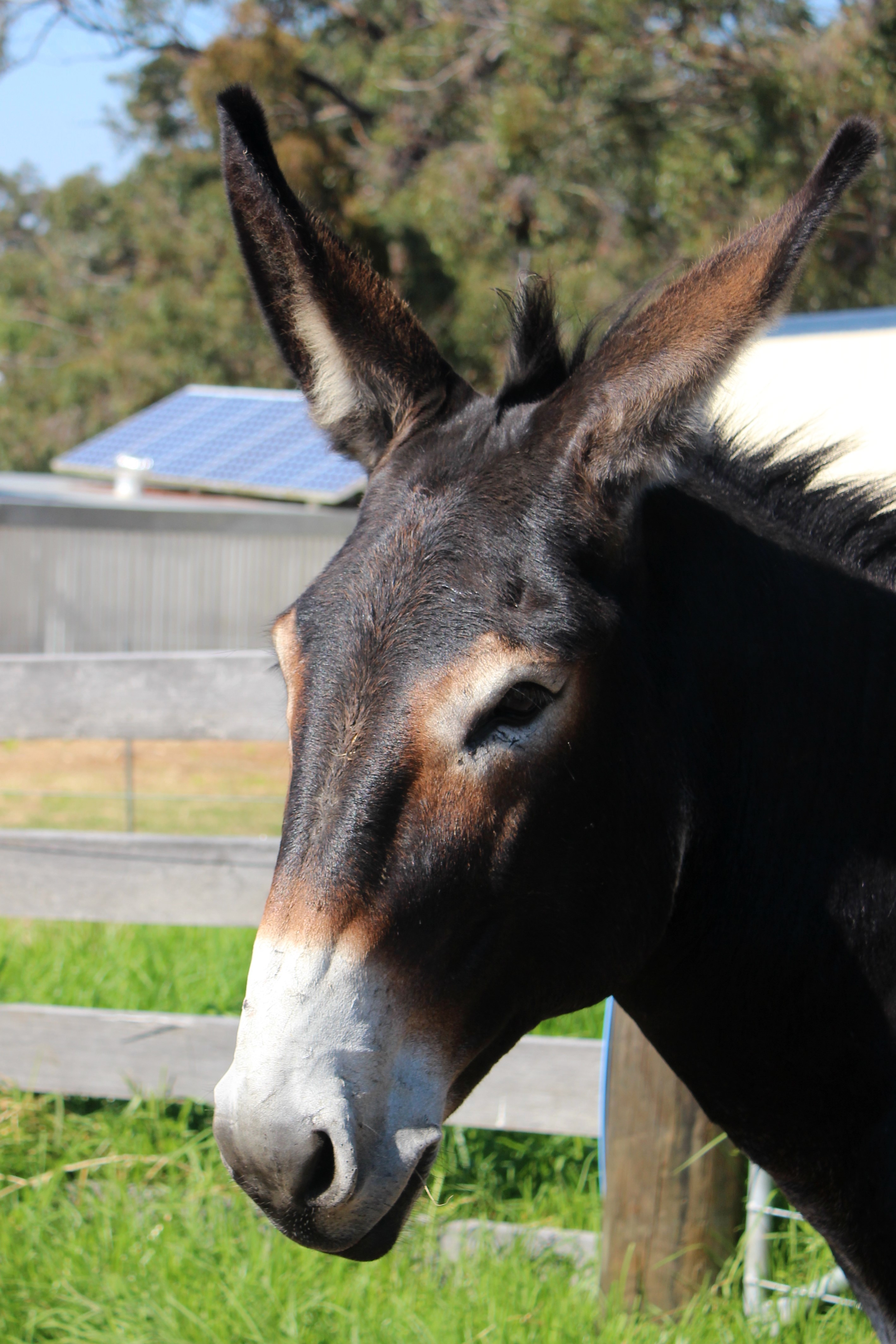
RARE BREEDS TRUST OF AUSTRALIA
powered by TidyHQDonkeys: American Mammoth Jackstock
Donkeys: American Mammoth Jackstock
Country of Origin 
United States of America
Australian Status

International Status
Critical in its home country the USA by the Livestock Conservancy and as Threatened Globally by the Equus Survival Trust.
Uses
Riding, harness - draught work for farm and forestry.
Breed traits
A very large donkey. Strength is seen, good bone, the purpose being a large powerful donkey not just height. Several colours, many being a handsome dark brown-black with the light pangare associated with donkeys. Blacks were once the preferred colour, being easy to match for teams. Spots and patches also seen.
They should have a strong neck, good feet. Over 14 hands for jacks and over 13.2 hands for jennies, most are far bigger, up to 16 hands. The head should be well shaped and not too long or thick with wide set eyes and long, upright ears.
History
The American Mammoth Jackstock Donkey (usually abbreviated to ‘Mammoth’) is one of the largest breeds of donkeys. They originated in the USA as part of the need to breed large, strong mules. In order to breed a high-quality mule, a high-quality donkey jack is needed, and to get high quality jacks high quality jennets are needed, hence the development of this donkey breed.
To obtain their breeding stock, donkeys were imported to the USA from Europe, most commonly from France, Spain, Italy, and the islands of the Mediterranean. Between 1885 – 1893, 800 – 1,000 donkeys were imported from that area to Nashville alone.
Prior to the American War of Independence there was not much information on donkey breeding, however, soon after that was ended in 1785 donkey breeding took off. At the end of the War, the King of Spain presented General George Washington with a Spanish jack (named Royal Gift) and a jennet. General Lafayette also made a gift to General Washington of a fine jack (named Knight of Malta). When a French jack was bred to a Spanish jennet, the famous jack Compound was produced. The mules he sired sold for upwards of $200 each and this generated considerable interest in mule breeding.
The most notable imported jack of the early to mid-19th Century was Mammoth (sometimes known as Imported Mammoth). He was imported to the USA circa 1856 and considered to be the origin of the breed’s name. Accounts indicate that he was 16hh and heavy like a horse, with large feet and bone. He was said to be far superior to any other jacks at that time and has been credited with having improved the size and quality of the local donkey stock more than any other during his nine-year breeding career. Limestone Mammoth, a descendant of Mammoth is a good example of the Mammoth bloodlines. Other notable imports were Paragon, Knight Errant (imported around 1840), Barcelona, Midnights, Starlight and Black Prince.
There was a bit of a hiatus during the American Civil War (1861 – 1865) and then donkey importation resumed. In about 1867 or 1868, AC Franklin and Major Craig of Tennessee imported a group of jacks from Catalonia in Spain. This group included Rifle and Laberdale. In 1868 Malta was imported from Malta by L W Knight. In 1882 Mr Lyle of Kentucky imported a group of jacks from Seville, Spain – a group that included Abran. In 1882 another group came in from Cordova and Seville in Spain. This importation of donkeys from Andalusia, Catalonia, Majorca, Cordova, Leon, Cerdan, Italy continued throughout the second half of the 19th Century. Some inferior jacks were also imported from Mexico, and this was seen as a potential risk to the quality of breeding stock. In 1888 the official breed society, The American Jackstock Association was formed.
So, from this it can be seen that the Mammoth breed was created from a mix of Catalonian, Andalusian, Maltese, Majorcan, Italian, Poitou bloodlines. All of these were big, strong breeds of donkey. Sadly, many of them are now extinct in their native lands.
History in Australia
Donkeys were imported into Australia from the earliest colonial days and were invaluable to assist with the movement of goods through the Outback. During the colonial period large breeds of donkeys were imported from Europe, in much the same way and for the same reasons that they were being imported into the USA at that time.
From at least the 1900s, Mammoths were standing at a few studs in Australia. John Marshall Jr and Libord who were at Yanco Experimental Farm (Yanco NSW). Collay (foaled in 1928) was purchased by the Fairymead Sugar Company in Bundaberg. A large farm at Gunnedah, "Nombi", was in 1909 described as being the largest stud in Australia, standing many Imported American and Spanish Jacks. The NSW Government had a breeding program, and a yearbook of 1917 stated, "Half the farm is given over to the purposes of breeding Mules and Donkeys".
In the 1940s increased mechanisation caused interest in donkeys and mules to cease.
The modern importation of Mammoths started in 1999 when Hans and Pat Streefkerk imported Cokeley Major Leo from the USA. He was followed by Carousel Farms Bear Track Chuck and TJC Ginger who were brought to NSW by K&B Hoole. Unfortunately, Ginger died during foaling, but left a jenny foal sired by Carousel Farms Houston to carry on in her place.
Mammoths are now bred at several studs in Australia and are also still imported in from the USA and New Zealand.
Australian population
30 (estimate) (2021)
Breed Organisation
- Donkey All Breeds Association of Australia (DABSA), formed 1976. DABSA register Mammoth Jackstock and donkey breeds in Stud Books.
- The American Mammoth Jackstock Association is the breed body in country of origin, founded 1888.
Photo credits
Top Photo: Awapuni Dallas.
Photos below: Awapuni Tex's Ethel and baby. L to R: Wombalyn Rise Kenzi, Wombalyn Rise Calypso and Southern Skies Dolly Varden.
All donkeys owned by Tracey Brand of Wombalyn Rise Stud.
